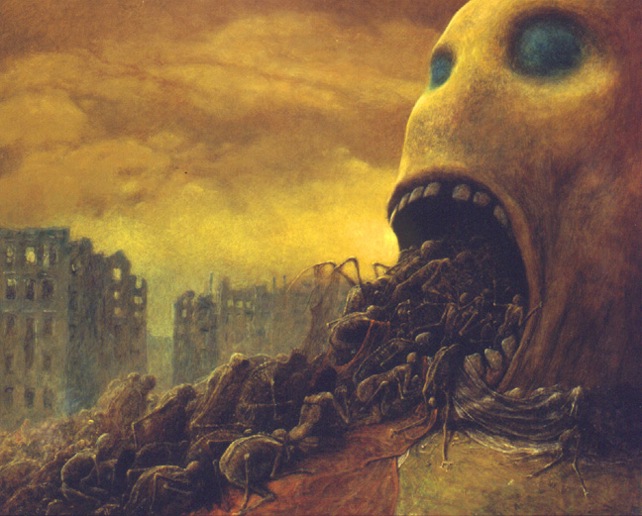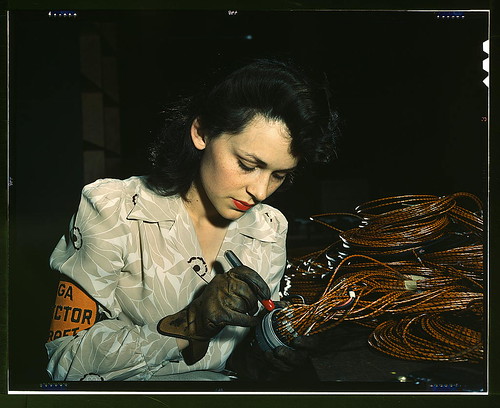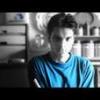-
Posts
93 -
Joined
-
Last visited
Posts posted by Valerio Sacchetto
-
-
actually, adrian, "photography" is writing with light (from phos (light) and graphis (to draw)). "cinematography" involves motion (from kinesis (movement) and graphis).
But as Fellini said "films ARE light" and it's not by chance that Storaro titled his book "Writing with light" :P
Aside from that particular i see cinematography the same as you. The cinematographer in my opinion is the artist in charge of recording the evolution of what happens in front of a lens on a medium in way that supports the story.
A movie is the result of the work of many many people and the cinematographer is the one who makes sure that everyone is working toward the same objective and that everything work seamlessy (image wise).
The cinematographer is a technician but at such a level that s/he can foresee the result and manipulate the elements by means of technical aids at his or her will. At this point i think the cinematographer also makes statements that reflects his or her own philosophy, his or her way of life, the way s/he SEE life.
-
wow, aside from the colorization of old movies (which is a bad thing IMHO) this can be used to achieve interesting effects for relatively cheap. I can already see the strange feeling you get from colorized movies, but it can be extended to an artistic decision. Another tool in the belt.
-
mmm...imageshack?
-
I'm working on an short in which a man is on acid and my mind is blown as to how to light/shoot this to achieve a decent effect. I have gone back and watched Fear and Loathing (for obvious reasons) but only figured from it to shoot all Wide and off axis. I just thought i would ask everyone on the board what they would do for a situation like this, as it gives you pretty much limitless creativity to mess around! Any Thoughts?
As you just said a situation like this one gives you limitless creativity and everyone may see it in a different way and it would still be legitimate. Wide and off axis is just one thing and not very related to "lighting". You should find your own idea of how things look when under the influence of drugs. You may read descriptions of people who had the experience, medical reports, reference your dreams, paintings etc etc... For example things often used are overexposure mimicking mydriasis (excessive dilation of the pupil), slo-mo for the delay in reflexes, the same image superimposed with a bit of delay for the confusion and so on. These are just examples...
-
I can only speak for the italian scene and naturally someone will say i'm utterly wrong. :rolleyes:
Some time ago tarantino said new italian cinema is depressing, many raised against him defending the italian productions. Now i'm one of the few who don't like tarantino but he was absolutely right, italian cinema is sick. What was the last italian movie you saw? and the last one you actually liked?
Andy's right, in italy we have a system where movies are funded by the government up to 70% of the budget and then only 30% is needed to be refunded. If that doesn't happens the state gets the rights for the movie. Now you can see that for a producer is not important if the movie gets distributed and the state of course can't afford the costs of a proper distribution (that's a semplification tho). By august 2007 only 25 movies were profitable over 544 produced, many of which never saw the screen of a theater (nor a dvd release) and amongst these there are movies by directors like monicelli and antonioni. One got 300.000? of funds and only got 995? (yes nine hudred ninety five euros) in returns. Since those funds should go to movies of "national cultural interest" the themes are always the same. It's like italy is chained to corrupted forms of neorealism and comedy. The french put up a machine where you can make genre films (sci-fi for example) while here the only thing you can do are demented comedies or "social" themed movies. Tv-movies are the others productions but they're all about saints or police :P
It's not a surprise that people don't go watch them.
David is right again about the risks and if you don't risk you can't hope to evolve and compete.
These are just a couple things and a proper analysis would take more time and touch many more topics, but to me the main culprit is the way those funds are given and to who (cinema here is just another political battelfield...).
-
Different types of light metres I meant to say.
Thats it there are any?
do you mean incident and reflected?
-
nope :Pdon't you guys think this emphasis on painting as an inspirational source for cinematography is too much.
Actually we're all very aware of that. We look for ispiration and paintings are not only a mere reproduction of what an artist sees but also what he feels. If a particular painting gives you an emotion through an unreal use of light you may want to mimic it to get the same emotional response. Of course you wouldn't do it with paint and brushes but with what you know best: lights, lenses, filters etc. The point is that we're not copying we're interpreting. It's like when a musician gets inspired by another music or something totally unrelated to music like a landscape.I used to study graphic arts, I'm the son of an artist, and yet, when it came to shoot, it did not match. everybody seemed to forget that a work of art is staying on the wall for you to admire for hours, from any distance you want, as an object, while a movie passes by at 24fps, and you are fixed to a chair.try shooting a Vermeer (even 65mm), project it on the wall for half an hour an you'll get an empty hall just as quick.misu
It's been done. And the format is not important ;)
-
Hi eswar. We did something similar a while ago, although it wasn't shot right under a blazing sun but in a slightly shaded place. The setup was quite simple, rainmakers (sorry i don't know the name in english) all around the place and a strong backlight (i don't remember the power, it might had been a 6k HMI). And that's all.
http://www.youtube.com/watch?v=gyRz27ef3Cg the very opening scene, sorry for the youtube quality...the rain is almost invisible.
p.s. http://www.cinematography.com/forum2004/in...?act=boardrules ;) «Members on this forum are required to use their full real names for their Display Name.»
-
http://www.oyemodern.com/designers/re-vision/
How committed (or geeky) are you to show everybody where your heart is at this way? :lol:
-
we're too far behind here, i'd pay to have such an opportunity in my country...or one that's near enough :P (enough OT. good luck)
-
Being in post production, I don't remember much about stocks and filters. I do know that it was Kodak, and day exterior. The bleach bypass was for the look, and the reason for needing to match was an unfortunate miscommunication. Some of the material that was supposed to have the bleach bypass look was accidentally shot and processed normally.
That turned out to be a good thing. Bleach bypass basically discards some of the film's ability to record information. Identifying and discarding the same information in telecine works very well, but trying to pull it back out of the treated image could land in the very difficult to impossible zone. It's like my grandfather used to say about cutting lumber: Off you can always cut more, but on you can never put. ;-)
-- J.S.
Thank you very much John for all the infos!
Would you say that nowadays it's better (taking flexibility and final result in account) to get the bleach bypass look in post than by the actual thing?
The going into the "impossible zone" sounds like something actually desirable from a certain POV ;)
-
Thank you guys for the answers. Sometimes being an actor is not such a cool thing then :rolleyes:
-
maybe i should put some links/images ;)
Vermeer: http://www.essentialvermeer.com/

Beksinski: http://www.gnosis.art.pl/iluminatornia/szt...w_beksinski.htm


Waterhouse: http://www.johnwilliamwaterhouse.com/index.php

Friedrich: http://www.wga.hu/frames-e.html?/html/f/friedric/index.html


Not painters but photographers, a lot of you probably already know of this but many probably don't.
library of congress: http://www.flickr.com/photos/library_of_congress/

hope someone finds this as useful as i do. B)
-
Oh i do so love this thread! We can't know all the painters or photographers in the world so this is a good place to come and see something that may be new and inspiring!
Personally I always take a look at Vermeer's paintings especially when it comes to realism and soft light.
Recently i got interested in beksinski and his strong contrasty fantasy works. Maybe a good reference for art directors too.
Friedrich is another artist that is always in the back of my head. His paintings are always more than the mere reproduction of reality, with areas that are dark but full of details and strong lights that are confined in a precise place. Often his subjects are seen from behind and silhouetted.
John William Waterhouse is another painter that i found interesting lately.
-
We had a show once that did some bleach bypass, and later had to match some normally processed film to the bleach bypass. The telecine colorist was able to nail it, no problem, nobody could tell the difference.
The only problem with the power of electronic color correction is keeping it in the right (DP's) hands.
-- J.S.
That's nice to know. May i ask you some questions? Like stock, filters. Was the bleach only for desaturation or for the "look" of it? You had to match the footage because of an "afterthought"? The match went in which direction (normal footage matched to the one with bleach bypass or vice versa)?
Thank you in advance!
-
I wouldn't be so surprised that someone smoked a joint for real, after all it's not so strange or scandalous (anymore). However on bigger productions there would be problems with insurance so it would be more difficult. Not impossible tho. As of today i've always seen prop joints and weed made for the shoot.
I have a question vaguely related. When the script asks for the actor to snort cocaine and you clearly see the white thing going up (so no blowing) how's that achieved? Are there substances that are safe to inhale that have the same appearance as cocaine? Can we talk about that here, publicly? :P
-
Telecine
And as far as production design goes it will be mostly exteriors so difficult to dress. Costume will be something I will definitely look at
Then just turn down the saturation in post, you should be able to test a normally processed negative and post desaturation quite easily.
Production design is still your best friend because you may have everything down in tone but a bright green lawn behind your subject so you may want to have an equally saturated dress and makeup so when you turn the saturation down everything will fall into place. The opposite is also true i.e. if you want everything desaturated but keep a particular color more saturated you should dress your scene accordingly.
Other methods affect contrast too. I remember kevin zanit posted stills from his own tests of bleach bypass. if i can find them i'll post the link.
Hope this helps :)
kevin's tests: http://www.cinematography.com/forum2004/in...showtopic=22663
if i forgot or said something wrong i'm sure someone will give you better answers ;)
-
Are you going for a print or telecine?
-
Hi
Can anyone tell me the difference between all the filters. How much light do you loose? What is the type of diffussion you get from them? If im using 216 on a wide. what would i use for a cu?
Thanks in advance
If you put a sheet of 216 on your lens you'll get nothing but a white-ish image :P
as John pointed out you're speaking of lighting gels.
As a rule of thumb longer lenses "accentuate" the diffusion so you'd use a lighter filter. But at the same time you have to decide how many details you want to see, wide shots may need more details than a close up and those are (generally) made with a wider lens...so you'll go with heavier diffusion because it's a wider lens or a lighter difusion because it's a wide shot? Test (and taste) may be the only answer.
Hope this helps, ciao.
-
http://www.panavision.com/product_detail.p...=278&cat=60
A bit too much but the concept is the same :P
-
Any recommendations on some films that would be likely to sell?
I guess x218/19 may be the best bet.
-
the first thing that came to my mind: chinaball on a boompole (for soft ambient, key, whatever. it may flicker or not depending on your taste).
-
and when we say 1k light, 2k light, the "k" is kilo, right? kilo watt, its not kelvin?
yup :)
-
Don't forget to add the power of production design. What you shoot is as important as how you shoot it. Good luck!




Full Moon - Making Stars Stand out in the Sky?
in General Discussion
Posted
Now this is just a thought. I don't know how feasible it would be but maybe it's worth a try especially if you're using digital.
You may try to make your own ND filter with clear glass/plexi/resin whatever with a round piece of nd gel attached or held between two pieces of glass. Since you're doing long exposures you can center the spot on the moon and then slightly move the filter to soften the edges and mask the imperfections the support may have. It'd be tedious as it can be but again...it's just a test after all. The principle would be the same as dodging in a darkroom (only the result would be like burning).